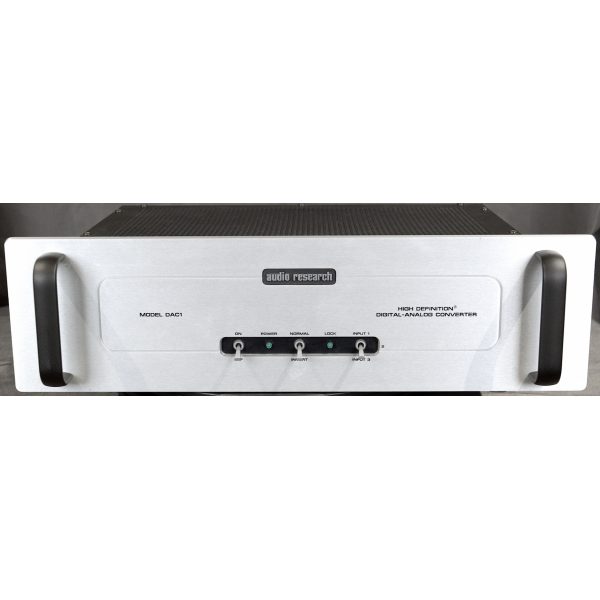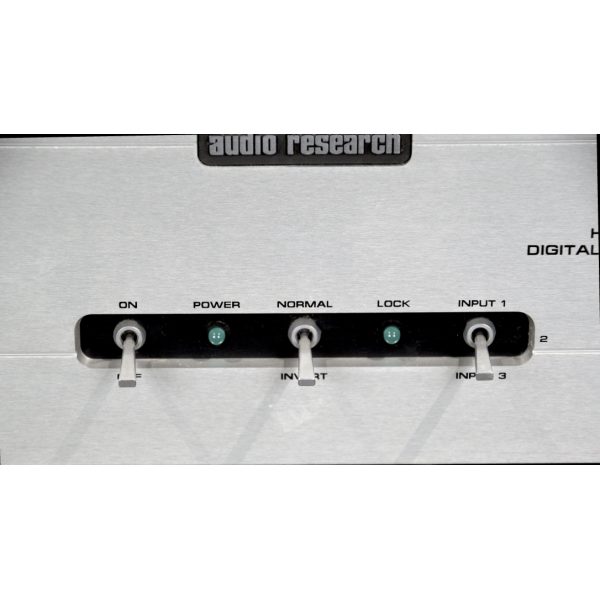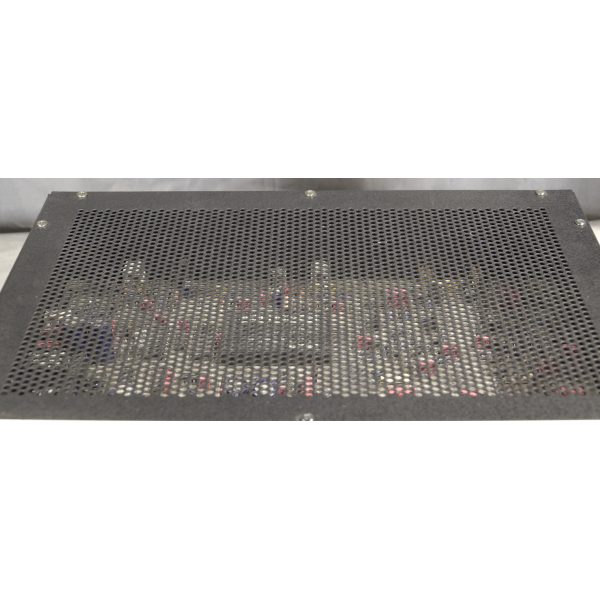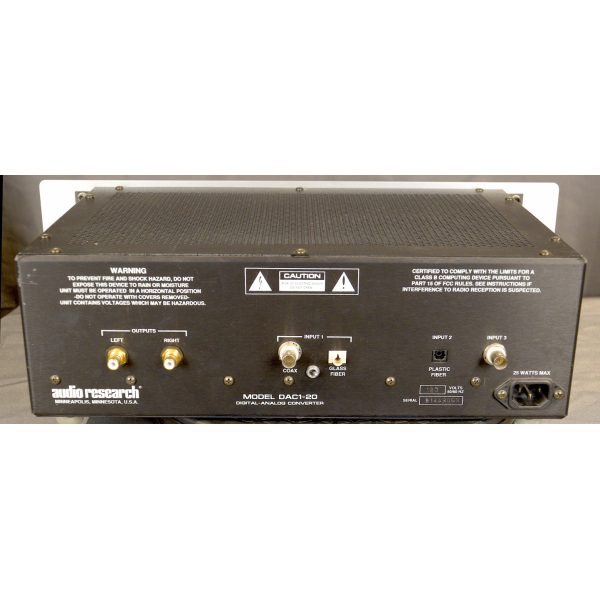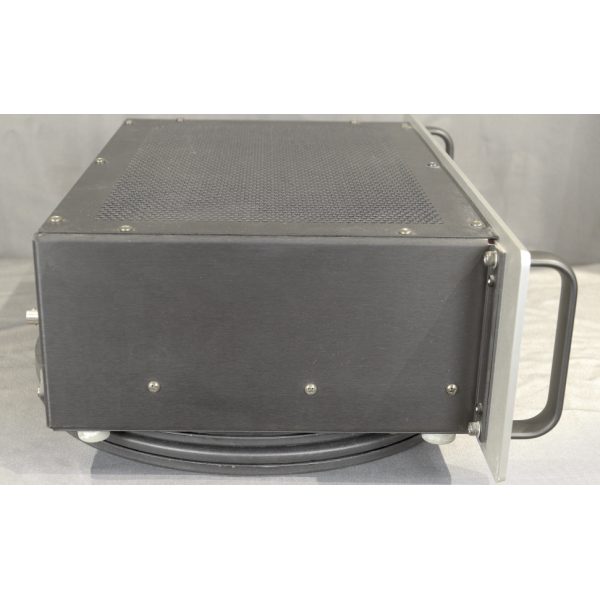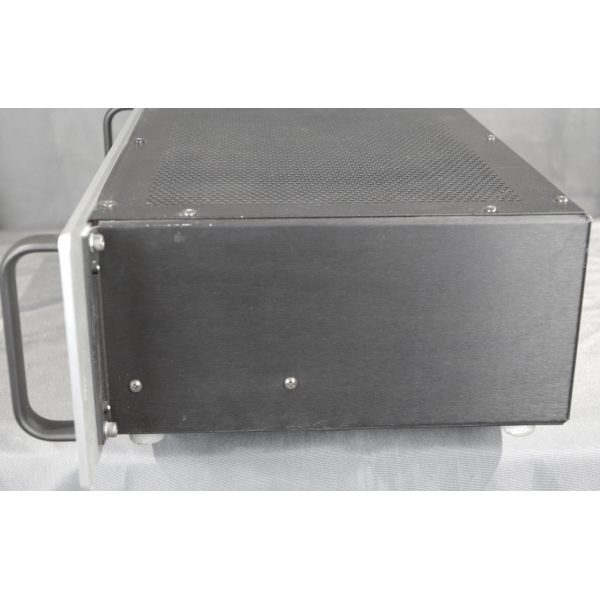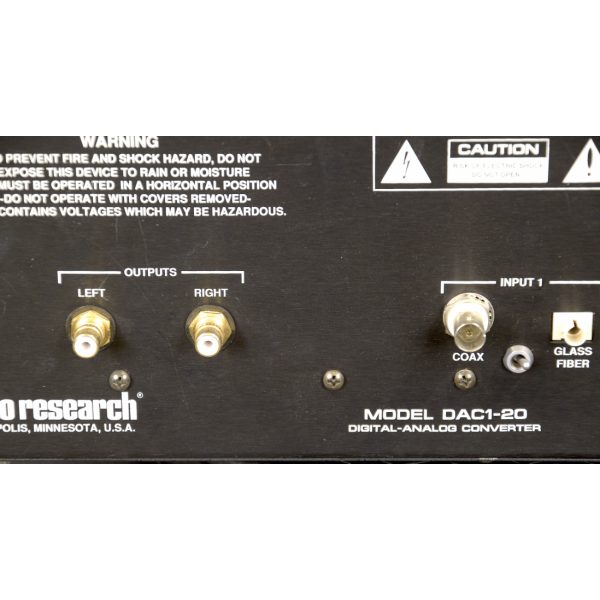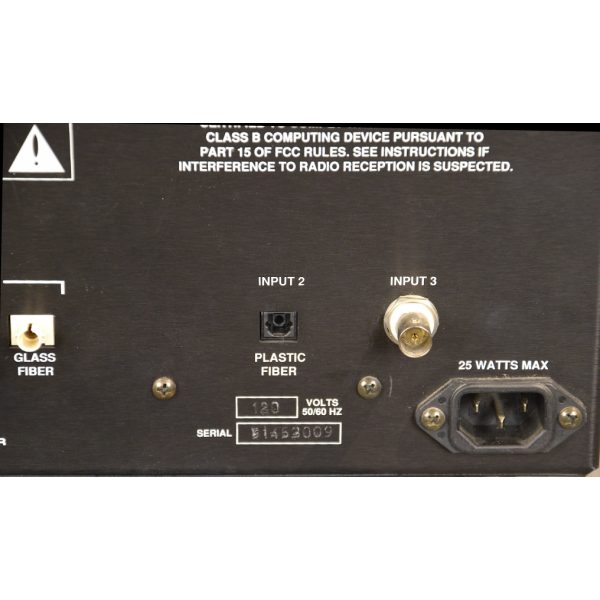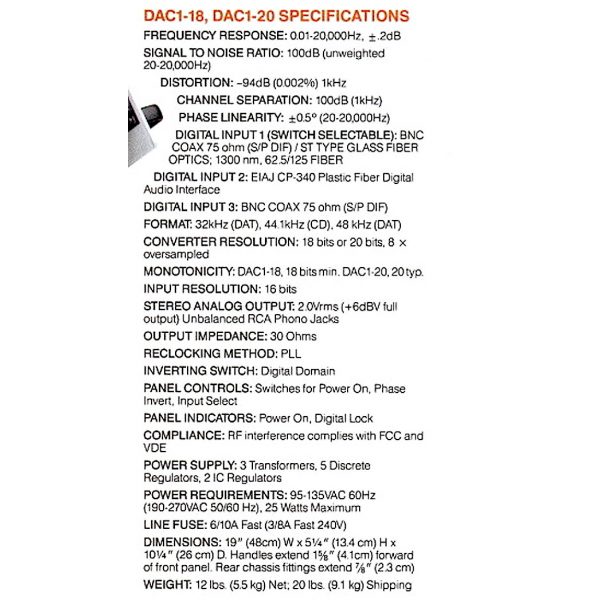Audio Research DAC1-20 (20 bit version)
20 bit-DAC with discrete analog output

All pre-owned product is tested in our service department and have been passed for sale... and comes with a 90 day warranty!
In very nice condition! (some small scratches on side and back.)
Original manual, box and packing ARE included. Introduced in 1991. Specs are last image.
"The DAC1-20 is clearly toward the top of Class A in Stereophile's "Recommended Components," and may be the most musical converter I've auditioned. The fact that it costs much less than the competition makes it, in my view, the best buy in D/A converters today." —Robert Harley - Stereophile Magazine
There is no single key to the DAC1's remarkable performance, but the three basic sections of its overall architecture merit discussion: power-supply topology and regulation; the digital-analog converter itself; and the all-discrete analog output stage. The first and last of these areas draw heavily upon Audio Research's many years of experience and leadership in analog circuit design.
First, three separate power transformers are used in the DAC1: one for the digital input and filtering stages, another for the digital converter and a third for the analog output stage. Three transformers allow tighter regulation of the supplies they feed, with better isolation between analog and digital circuitry, than a single multi-winding transformer can offer: the final result is cleaner, more dynamic musical performance. In addition, a total of five costly discrete regulators help maintain a clean supply of power to each critical stage. Finally, two linear regulators are dedicated to the digital input stage and to the automatic muting circuit. In-circuit capacitors are all audio-grade polypropylene or polystyrene types which have been individually evaluated for best sonic performance.
The DAC1's heavy, double-sided circuit board typifies the Audio Research approach: heavy plating and extra-wide traces laid down in a clean, "shortest-path" layout. Special care was taken in the design of grounding paths to prevent infiltration of the analog signal path by digital noise.
In addition to the meticulously executed power supply, the digital converter used inside the DAC1 merits further discussion. Manufactured for Audio Research by UltraAnalog Inc., an acknowledged leader in high-resolution digital design, the converter itself is a multi-bit, eight-times-oversampling design with full linearity over 112 db for the DAC1-20. These specifications are inherent in the design of the converter itself, and thus will not degrade or vary over time. The converter itself is preceded in-circuit by an 20-bit in the DAC1-20, eight-times oversampling digital filter providing de emphasis (when required) in the digital domain, scaled to all incoming frequencies. An initial digital "receiver" automatically locks on the incoming sampling frequency (32, 44.1 or 48 KHz) and re-clocks all data via a single phase-locked-loop circuit, thus minimizing data "jitter" at the input - a contributing cause of poor digital audio quality.
The DAC1 is an elegant, straightforward design, carefully executed, which does not require so-called "on-board computers" to "reconfigure" the digital data input.
The analog output stage of the DAC1 clearly exhibits Audio Research's belief that this section of the overall design has been seriously compromised in many previous digital products. The DAC1 has a high-current, all-discrete analog stage employing J-FET transistors at the input and MOSFETS at the output. Only costly discrete regulators are used, along with a patented DEC (Decoupled Electrolytic Capacitor) circuit. The latter is a new circuit technique employed by Audio Research engineers to enable critical bypass capacitors to operate more effectively (ie. with lower distortion) at middle and high frequencies, where the human ear is most sensitive.
Other, less obvious aspects of the DAC1's design are important as well. A built-in AC line filter at the input helps deliver cleaner AC power to all three transformers for better sonics. And, none of the DAC1's three front-panel switches (power on-off. phase inversion, and input selector) invade the audio signal path. Phase inversion is accomplished in the digital domain for maximum purity and accuracy.
Sonically, the DAC1 brings CD playback to a new level of realism and enjoyment. Used in conjunction with a high-quality CD transport, the DAC1 is capable of recreating a musical soundstage that is remarkably akin to high-resolution analog in its presentation of spatial cues, low-level ambient detail, high-frequency information and musical dynamics. In short, the DAC1 is a new window opened upon the world of digital playback.

